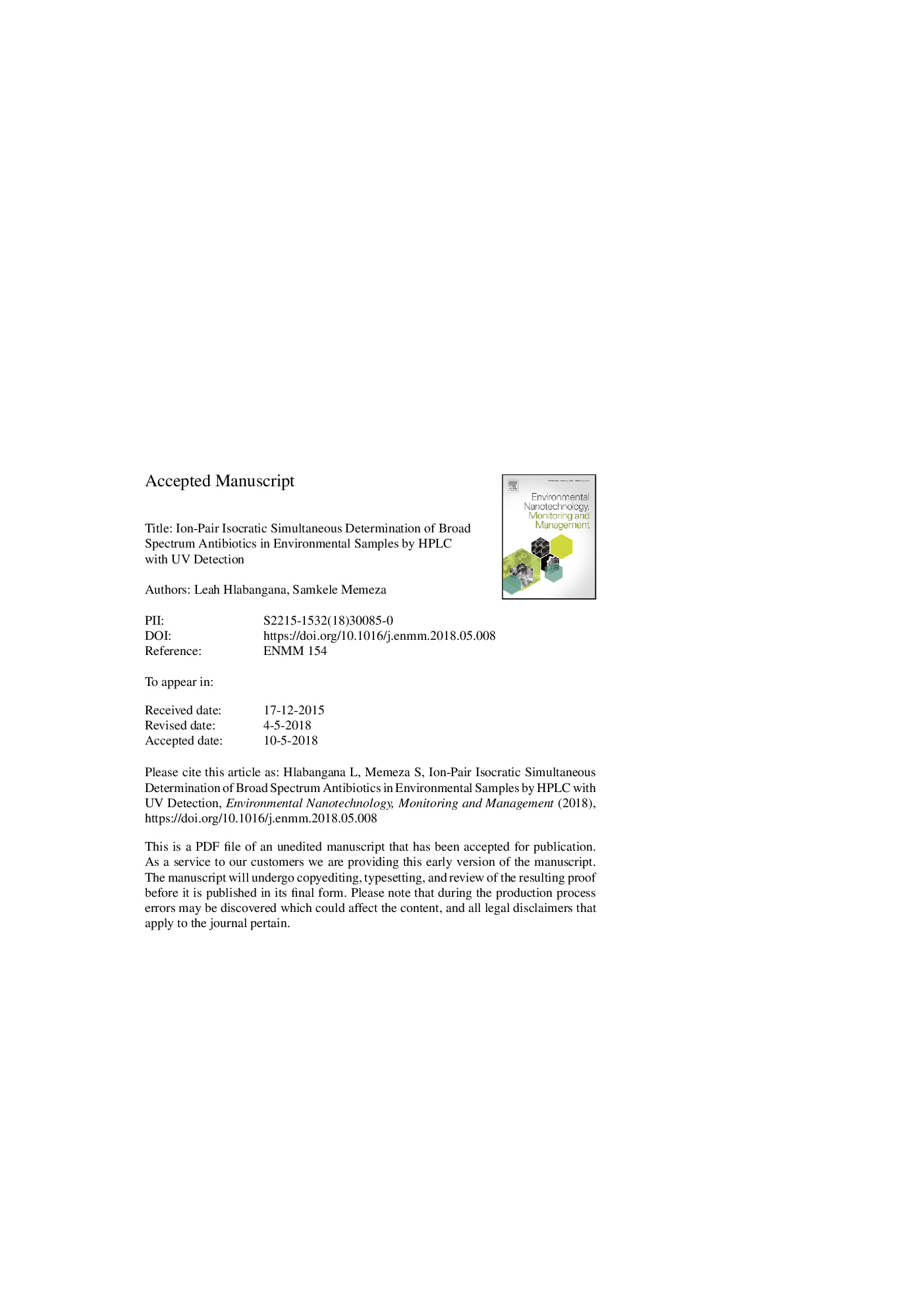| Article ID | Journal | Published Year | Pages | File Type |
|---|---|---|---|---|
| 8855592 | Environmental Nanotechnology, Monitoring & Management | 2018 | 20 Pages |
Abstract
Pharmaceuticals are used as medication to destroy or slow growth of bacteria and to treat infections. Their demand has increased as expected especially in hospitals in urban areas. They get excreted as part of urine and faeces to reach the environment as wastewater. Pharmaceuticals are also used in the agricultural sector where they are administered as growth agents for livestock and poultry animals, they in turn reach the environment through manure during cultivation season and also through waste water irrigation (Le-Minh et al., 2010; Rodriguez-Mozaz et al., 2015) The pilling up of these excreted antibiotics on the environment is of great concern as according to studies carried out in Europe and USA it can lead development of Antibiotic-Resistance Bacteria (ARB) which has been detected in drinking water supplies (Chen et al., 2014). Fluoroquinolones are one class of such chemicals, as they operate by inhibiting type II DNA toposiomerases which are required by the bacteria for synthesis and DNA replication (Principi and Esposito, 2015). A chromatographic method for the determination of fluoroquinolones is hereby presented. The analysis of six antibiotics was carried out in isocratic conditions in less than ten minutes. Analytes in alkaline medium showing maximum absorbance at around 254 and 330â¯nm with correlation coefficient over 0.9996 and linearity over three orders of magnitude. The method is sensitive with very low UV detection limits as low as 10â9 concentration range.
Related Topics
Life Sciences
Environmental Science
Environmental Chemistry
Authors
Leah Hlabangana, Samkele Memeza,
